AMD at 50: Five Decades of Computing Advancements
50 Years of AMD History

When AMD was founded May 1, 1969, it's unlikely that anyone could have predicted the path the small processor company would take. AMD has risen from a small startup to a worldwide corporation, competing with much larger companies such as rivals Intel and Nvidia, both of which have tasted surprising defeats inflicted by AMD.
AMD has scrapped its way through difficult times in its history but is now poised for more success as it moves to the 7nm process ahead of Intel's move to 10nm production. For the first time in its history, the company will have a process node advantage over Intel, which, if leveraged correctly, can lead to lower pricing and power consumption.
AMD has had great moments throughout its long history, and on its 50th anniversary, we'd like to look back at AMD's best and worst moments, from its first processor to Zen.
AMD Is Founded in Silicon Valley

AMD, which stands for Advanced Micro Devices, was founded May 1st, 1969 in Santa Clara, California by Jerry Sanders (sixth from the right) and his colleagues, just a year after Intel was founded. AMD initially sold processors to the US Army as a second supplier for Fairchild Semiconductor, where many of AMD's founders and first employees originated.
Over the course of the next several years, AMD began to accumulate important advances such as backward engineering some of Intel's contemporary CPUs. In 1976, AMD obtained an agreement with Intel that granted AMD a copyright license to Intel's microcode.
From Start-Up to Second Supplier

In 1981, IBM intended to introduce its Personal Computer (the PC) to the consumer market and wanted to use Intel's processors to power it. However, IBM demanded that Intel find a second supplier for its 8088 chips, and Intel found one in AMD. To ensure this, Intel and AMD signed a technology exchange agreement that allowed AMD access to Intel's existing architectures. The microcode agreement made in 1976 was also extended to 1995. This led to the creation of the 286, which was a clone of Intel's 80286.
A Legendary Rivalry Is Born
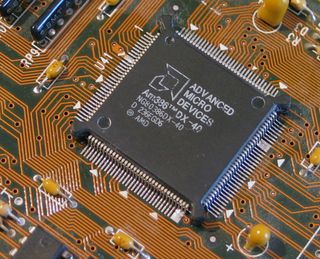
Intel eventually released the 80386. AMD attempted to clone that CPU, just like the 80286, but Intel attempted to prevent the sale of the new AMD 386. AMD argued that the technology exchange agreement allowed it to use not only the architectures that existed at the time but also their derivatives. AMD won its first court case of many against Intel, and the 386 was a success, gaining traction thanks to lower pricing and higher performance. This marks the first heated confrontation between the two companies as AMD moved from being a second supplier to a full-blown competitor.
Stay On the Cutting Edge: Get the Tom's Hardware Newsletter
Join the experts who read Tom's Hardware for the inside track on enthusiast PC tech news — and have for over 25 years. We'll send breaking news and in-depth reviews of CPUs, GPUs, AI, maker hardware and more straight to your inbox.
The K5, AMD's First Custom Architecture
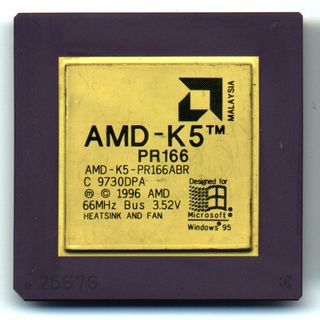
While not as successful as past and future CPUs, the K5 architecture represented AMD's first custom design and was not a simple clone of Intel's processors. The K5, at the time, was remarkably advanced compared to Intel's processors, but it wasn't quite as fast due to low clock speeds. It was never as successful as the 386 or 486 but proved AMD could challenge Intel on its own.
AMD Releases the World's First 1 GHz CPU
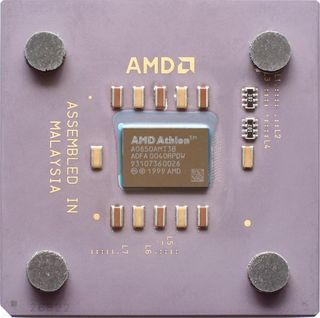
On March 6, 2000, AMD released the world's first 1 GHz processor, the Athlon 1000. The Athlon series represented an AMD ready to challenge the supremacy of Intel, and it has remained AMD's most successful desktop product since. The underlying K7 architecture competed against Intel's infamous NetBurst architecture, which was bested in many categories by K7, such as power efficiency, instructions per cycle (IPC), and price. The Athlons would never quite dominate the desktop market but were nonetheless a significant thorn in Intel's side until the Core architecture was finally released, which allowed Intel to level the playing field against AMD finally.
Hector Ruiz Succeeds Jerry Sanders as CEO

After 33 years of service, AMD CEO and founder Jerry Sanders was succeeded by Hector Ruiz, who ran the company during its peak and the beginning of its decline. Under Ruiz, AMD advanced its Athlon segment and began its first foray into servers with the Opteron series. Ruiz also approved the purchase of ATI Technologies, Nvidia's main competitor at the time. Though he led AMD during its most profitable period, he resigned in 2008 due to financial difficulties associated with the purchase of ATI and the effects of Intel's antitrust activities, which spawned several lawsuits made by AMD against Intel that lasted for several years until AMD finally won.
Opteron Chomps Away at Intel's Server Dominance

Having been launched in 2003, AMD's Opteron server CPUs quickly began to capture market share from Intel, peaking at 25% in 2006 and 2007, the highest amount of market share AMD has ever had in server CPUs. Intel's competing NetBurst based CPUs had difficulties preventing AMD from advancing in the market because Opteron was a much more efficient product, but eventually, the tide turned against AMD with the advent of Intel's Core architecture. In 2007, AMD's share began to shrink, though it would take until 2016 for AMD to essentially disappear from the market. Like the Athlon series, the Opteron series were held as highly regarded CPUs in the mid-2000s.
AMD Splurges and Buys ATI
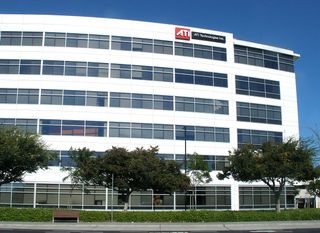
In 2006, AMD acquired ATI for $5.4 billion, and the deal allowed AMD to pursue the graphics market alongside the CPU market, leading to a new rivalry with Nvidia. AMD has been criticized for making the acquisition because it impacted the company's finances negatively, leading to several quarters of back to back losses. However, the acquisition allowed AMD to combine its CPU and now GPU technologies, which led to the creation of APUs a few years later. The ATI Radeon product line also experienced its best years yet after AMD obtained it.
AMD Is Forced to Spin off Its Fabs

AMD encountered financial difficulties due to the combined stress of the ATI acquisition and especially Intel's antitrust activities, which AMD eventually successfully sued for. In the meantime, AMD decided to spin off its foundries and go fabless by creating Global Foundries in 2009, which was owned by both AMD and the government of Abu Dhabi. Though Global Foundries failed AMD at times, its creation ensured the continued existence of AMD and prevented financial ruin.
The Small but Powerful HD 4000 Series
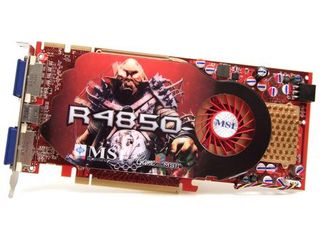
While AMD's CPU business was on the decline, the company made strides with its newly acquired GPU technology. The HD 4000 series was famous for bringing almost equivalent performance compared to Nvidia's competing products, but at a much lower price and with better power efficiency. The HD 4890 could be overclocked to 1 GHz just on air cooling, which wasn't feasible with previous GPUs. The HD 4000 series represented ATI's and AMD's highest amount of share in the GPU market at nearly 50%.
Matthew Connatser is a freelancing writer for Tom's Hardware US. He writes articles about CPUs, GPUs, SSDs, and computers in general.

